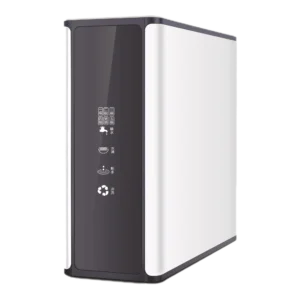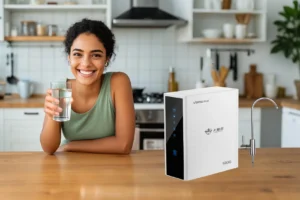Extending Your Water Purifier’s Lifespan: Proven Techniques
A water purifier is a long-term investment, and proper care can significantly extend its performance and durability. Below are practical strategies to keep your system operating at peak efficiency for years.
1. Prioritize Regular Filter Maintenance
- Stick to Replacement Schedules: Filters are the core of any purifier. Neglecting replacements allows contaminants to accumulate,
forcing the system to work harder and potentially damaging internal components. Use a reminder app to track filter lifespans (e.g., 6 months for carbon filters, 2 years for RO membranes). - Clean Reusable Filters: For models with washable ceramic or mesh filters, gently scrub them under running water every 2–3 months to remove sediment. Avoid harsh chemicals, as they can degrade filter materials.
2. Manage Water Pressure Effectively
- Install a Pressure Regulator: If your home has water pressure above 80 psi, a regulator will protect the purifier from leaks or ruptures caused by excessive force. This is especially critical for RO systems, which have sensitive membranes.
- Address Low Pressure Promptly: Reduced flow may signal clogged filters or a faulty pump. Regularly check water pressure with a gauge and replace filters or components as needed to prevent strain on the motor.
3. Protect Against Freezing in Cold Climates

- Insulate Pipes and Units: In unheated areas like garages or basements, wrap pipes with foam insulation and cover the purifier with a thermal blanket during winter.
- Drain the System During Freezes: If temperatures drop below freezing, turn off the water supply, open all faucets to drain pipes, and disconnect the purifier. This prevents water from expanding and cracking filters or housings.
4. Proper Storage for Extended Absences
- Flush and Dry the System: Before leaving for more than a week, turn off the water, drain all reservoirs and pipes, and remove reusable filters to air-dry. Stagnant water can foster bacterial growth and mold.
- Store in a Cool, Dark Place: For portable units, avoid exposing them to direct sunlight, which can warp plastic components. A temperature-controlled closet is ideal.
5. Regular Leak Inspections

- Check Connections Monthly: Inspect under-sink units for dampness, which may indicate loose fittings or cracked housings. Tighten connections gently or replace O-rings if leaks persist.
- Use Leak Detection Sensors: Place battery-powered sensors near the purifier to alert you of hidden leaks early, preventing water damage to cabinets or floors.
6. Optimize Water Source Quality
- Install a Pre-Filter for Well Water: If using well water, add a sediment pre-filter before the main purifier to trap large particles (e.g., sand, rust). This reduces wear on primary filters and extends their lifespan.
- Avoid Contaminated Inputs: Never connect the purifier to untreated water sources (e.g., raw lake water) unless it’s rated for off-grid use. Pre-treat such water with boiling or chemical disinfection first.
7. Follow Manufacturer Guidelines
- Read the Manual Thoroughly: Each model has unique care instructions. For example, some RO systems require monthly tank flushing to prevent biofilm growth, while others prohibit certain cleaning agents.
- Use Approved Replacement Parts: Generic filters may not meet the same quality standards as manufacturer-recommended ones, potentially compromising performance and voiding warranties.
Water Purifier Factory, Water Purifier For Home, Water Purifier Machine,Water Purifier, Water Filter Purifier System
By incorporating these habits into your routine, you’ll minimize downtime, reduce repair costs, and ensure your purifier continues to provide reliable,
clean water. A little proactive maintenance goes a long way in preserving this essential component of your home’s health and safety.
clean water. A little proactive maintenance goes a long way in preserving this essential component of your home’s health and safety.
Extending Your Water Purifier’s Lifespan: Proven Techniques

